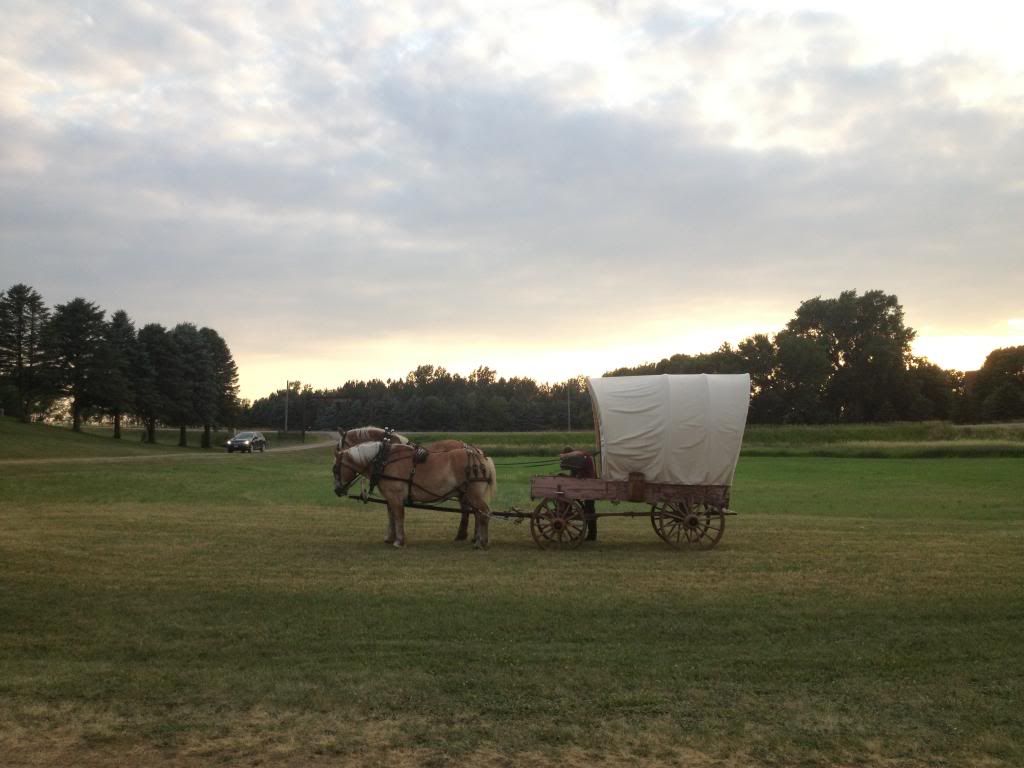
When I was a kid, I was completely obsessed with pioneers. Oregon Trail? My favorite computer game, easily. Kirsten Larson? My favorite American Girl character, naturally. Conestoga wagon? My transportation mode of choice, theoretically. My mother even sewed me a pioneer girl’s green cotton dress and yellow bonnet for Halloween one particularly awesome year. So it might come as a surprise that I did not manage to complete a reading of the entire Laura Ingalls Wilder Little House series. I have the series, which may or may not have been “borrowed” from my grandmother’s vast basement library, but I don’t think I ever managed to finish all the books. I know for sure that I read the first two, Little House in the Big Woods and Little House on the Prairie, and I must’ve read at least the next one, On the Banks of Plum Creek, because I remember reading about (spoiler alert?) Mary going blind, which occurs in that book. Technically I think Farmer Boy is the second one, but I don’t recall reading it, and anyway, I digress.
While visiting my cousin in Minnesota recently, I noticed “Laura Ingalls Wilder Historic Highway” or something to that effect written on signposts all along the country roads that we were traversing. Pure curiosity bolstered by my love of all things Manifest Destiny drove me to Google, where I discovered that Walnut Grove, MN, the setting of On the Banks of Plum Creek, was a mere hour’s drive from my cousin’s residence. Further Googling showed a museum located there, and—wonder of perfect timing!—the Wilder Pageant, a dramatic outdoor performance based on On the Banks of Plum Creek, being performed that weekend.
Here’s the Quick and Dirty for those not initiated into Wilder-dom: Laura Ingalls Wilder was a pioneer girl in the later part of the 1800s (born in 1867). She moved with her family from Wisconsin, to Kansas, back to Wisconsin, to Minnesota, to South Dakota, and to Missouri. I think Iowa was in there somewhere, too. Later in life, Wilder’s daughter inspired her to write novels based on the pioneer experiences of her childhood. (They’re based on events and people from her life, but some of the sequencing and chronology is altered.) They were met with great success--the first book was published in 1931, and the books have been in print since then. She died in 1957, but her books have become classics of children’s literature. I mean, who hasn’t heard of Little House on the Prairie? Here, read some more about Laura Ingalls Wilder and her life.

I guess when I was reading the books as a kid I never really processed what state or territory in which they were taking place—to me, it was more just some amorphous concept of “the West.” So I was kind of surprised to find one of the homestead sites was in Minnesota! (Shouldn’t have surprised me, though, because as all American Girl fans know, Kirsten was a pioneer in Minnesota, too.) I talked my cousin into going, and since it was kind of a last-minute spontaneous decision, we had to hoof it to make it there before closing. We made it there with half an hour to explore the museum—thankfully they had extended hours during the run of the Wilder Pageant.
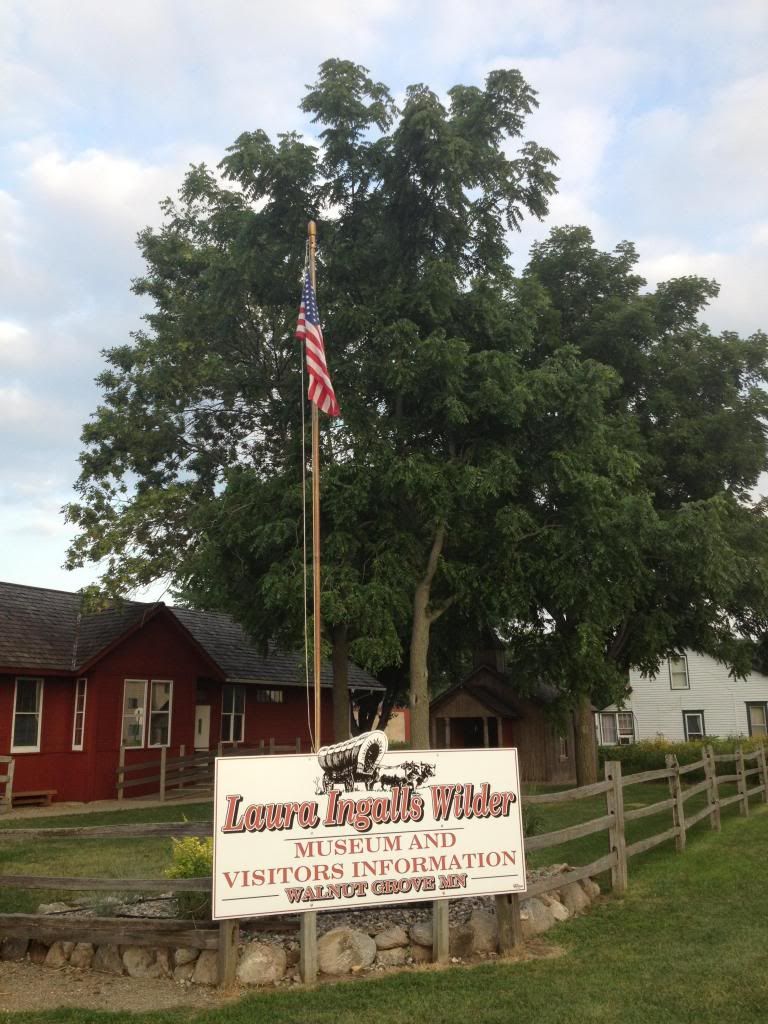
We had to go a little faster than we probably would’ve under normal circumstances, but we were able to get through all the exhibits (and hit the gift shop!) in 30 minutes. It would’ve been nice to be able to linger and read all the signs and things, but I still felt like I got my $6 admission’s worth. After entering via the gift shop and paying for our tickets there, we made our way to the depot building, which was the most like a traditional museum. The first of two rooms had exhibits and interpretive signs relating to Laura Ingalls Wilder, her family, and their travels, including items owned by them and items similar to ones they would’ve owned. Here’s a sampling of what was on display:
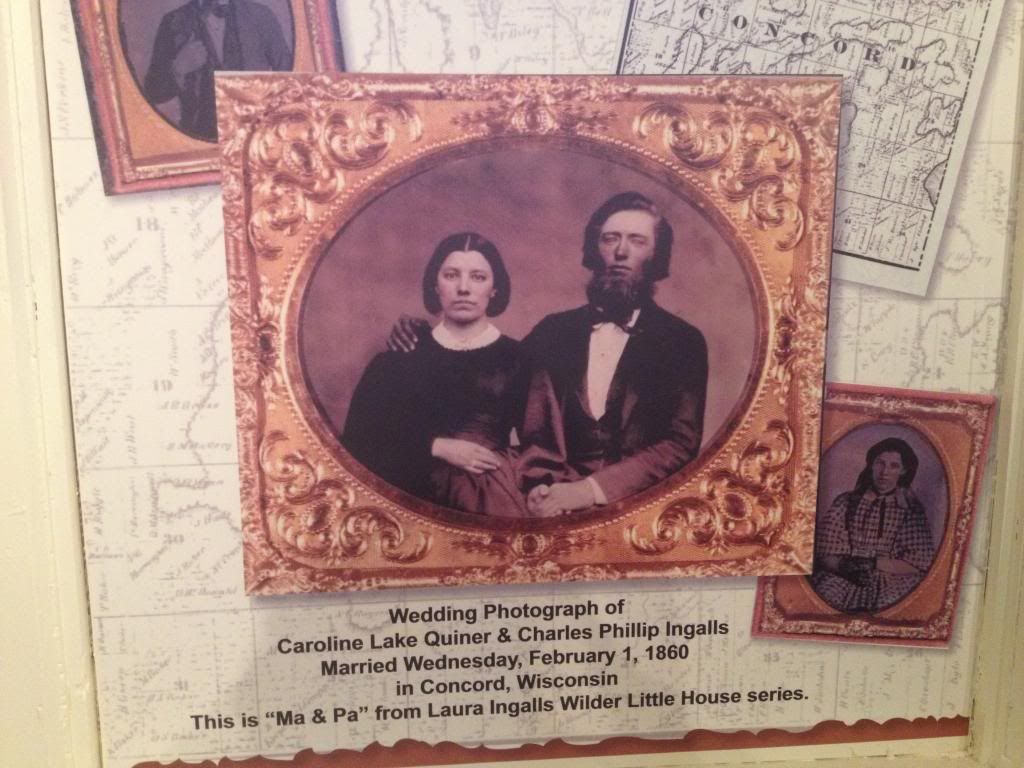
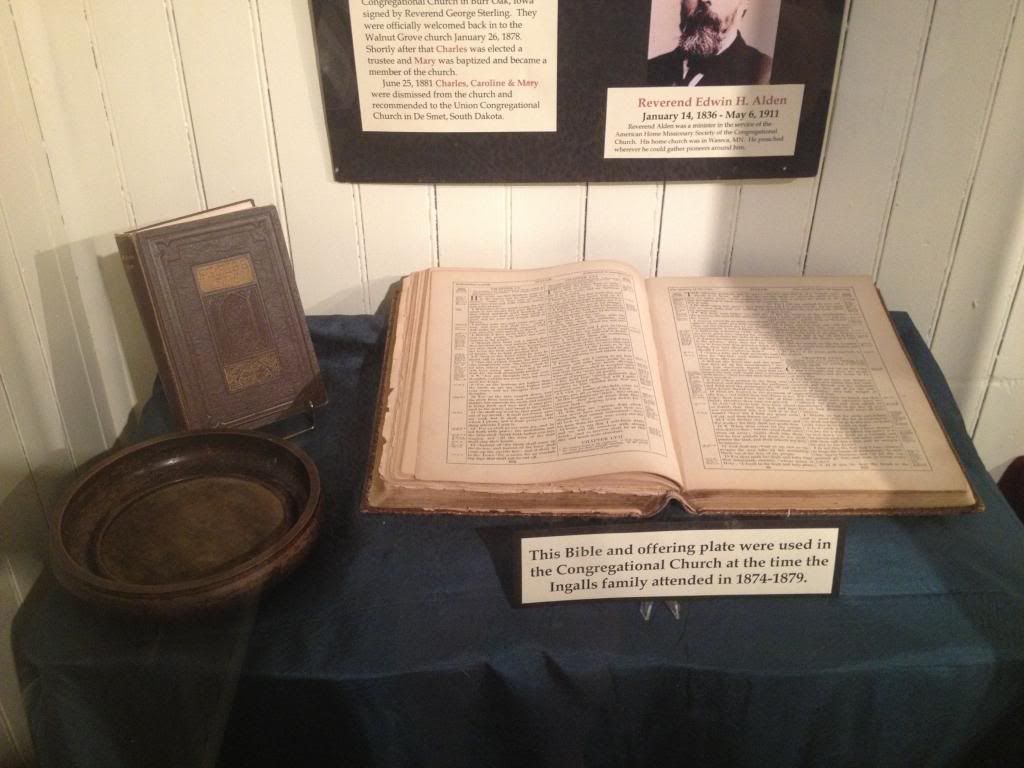
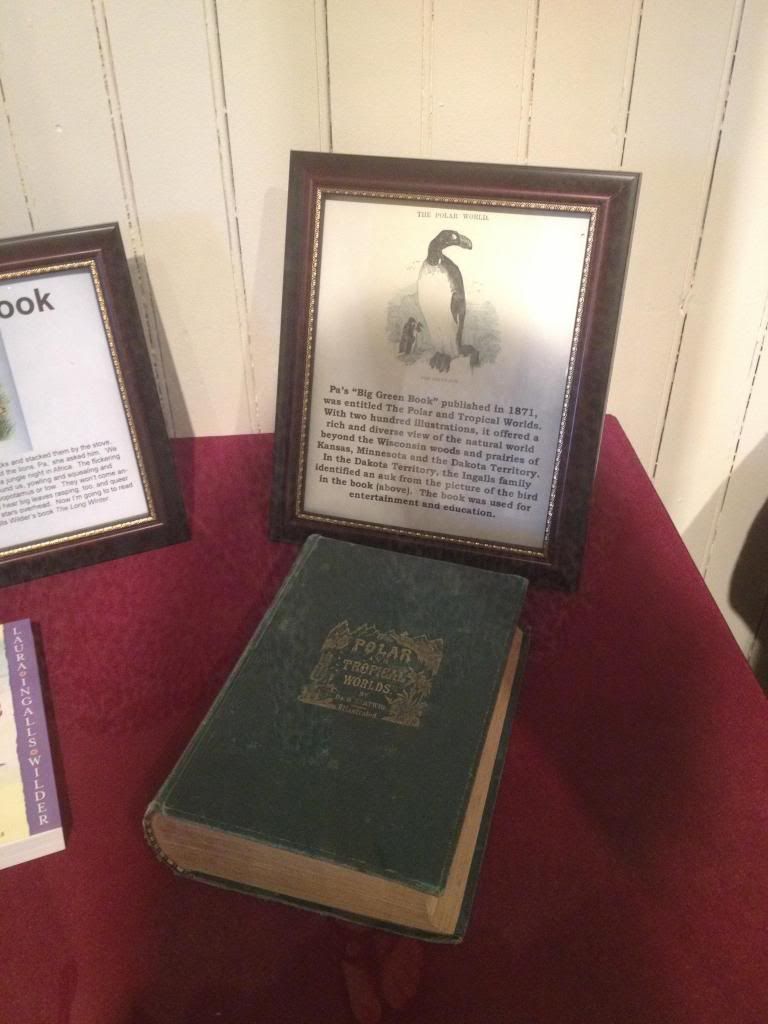
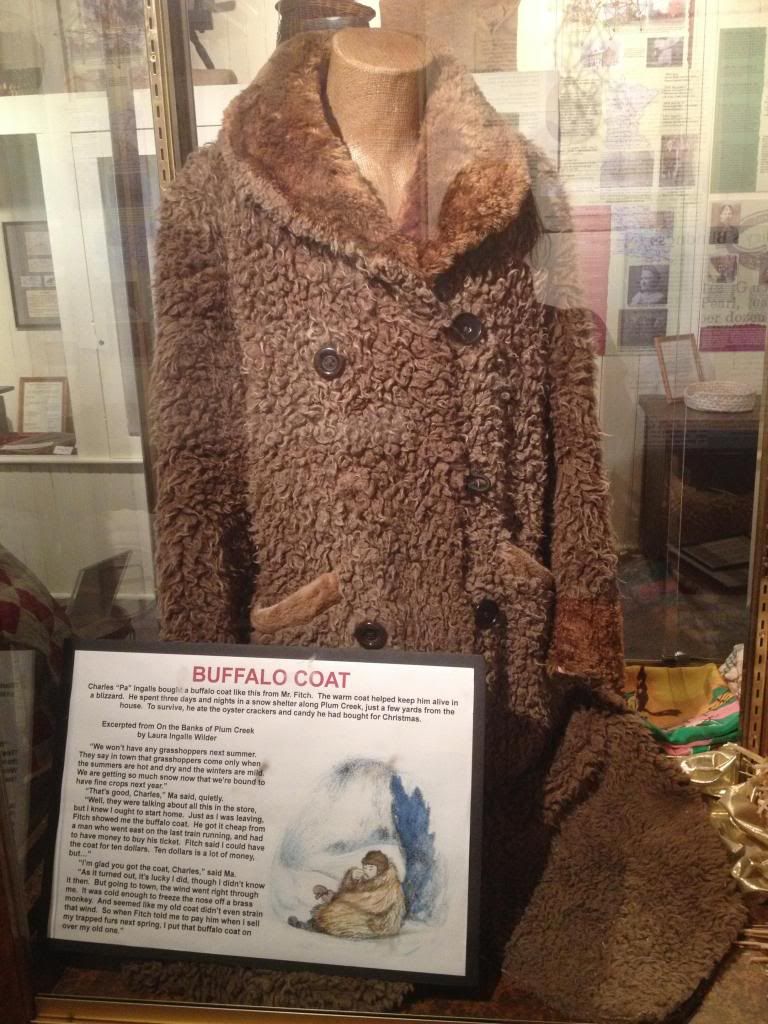
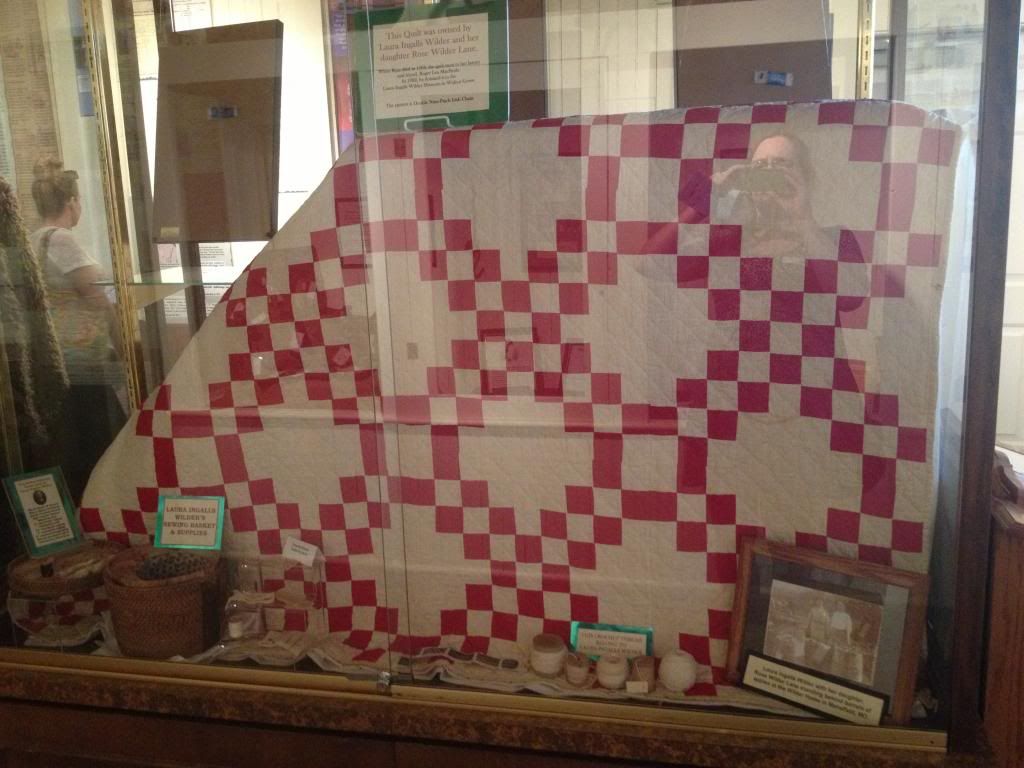
How cool is it that they have an actual quilt that was owned by Laura and her daughter, Rose? Pretty darn cool, I’d say. Still, my favorite part of this exhibit was the collection of original Garth Williams illustrations from the books, which the museum was able to purchase through donations.
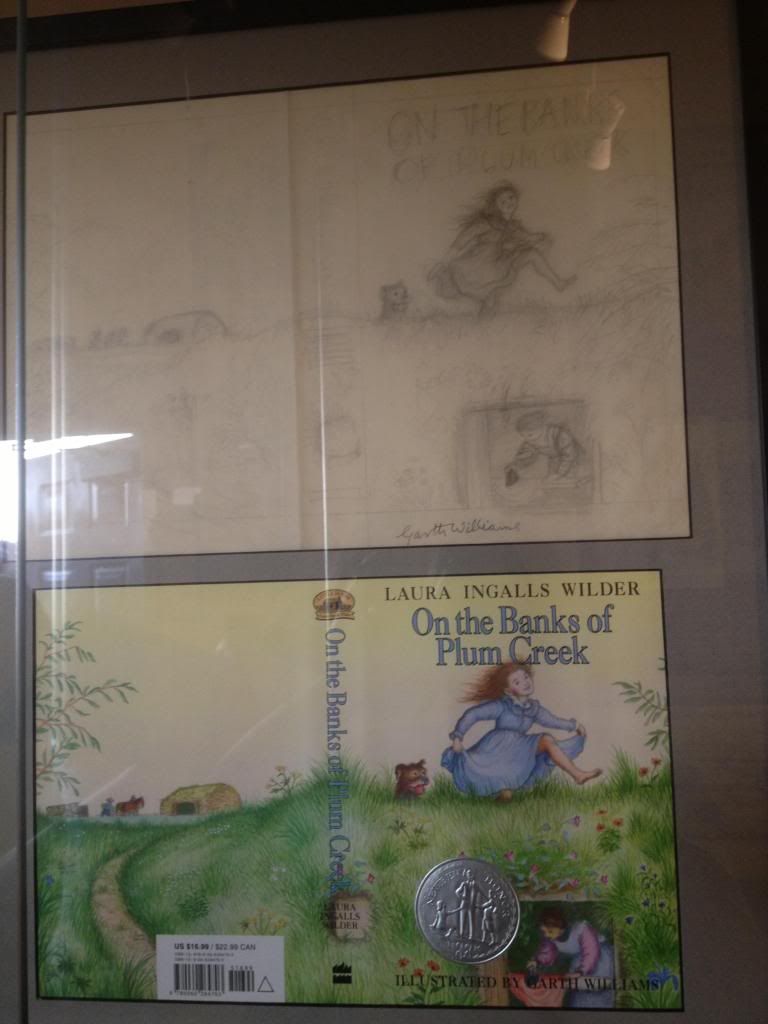


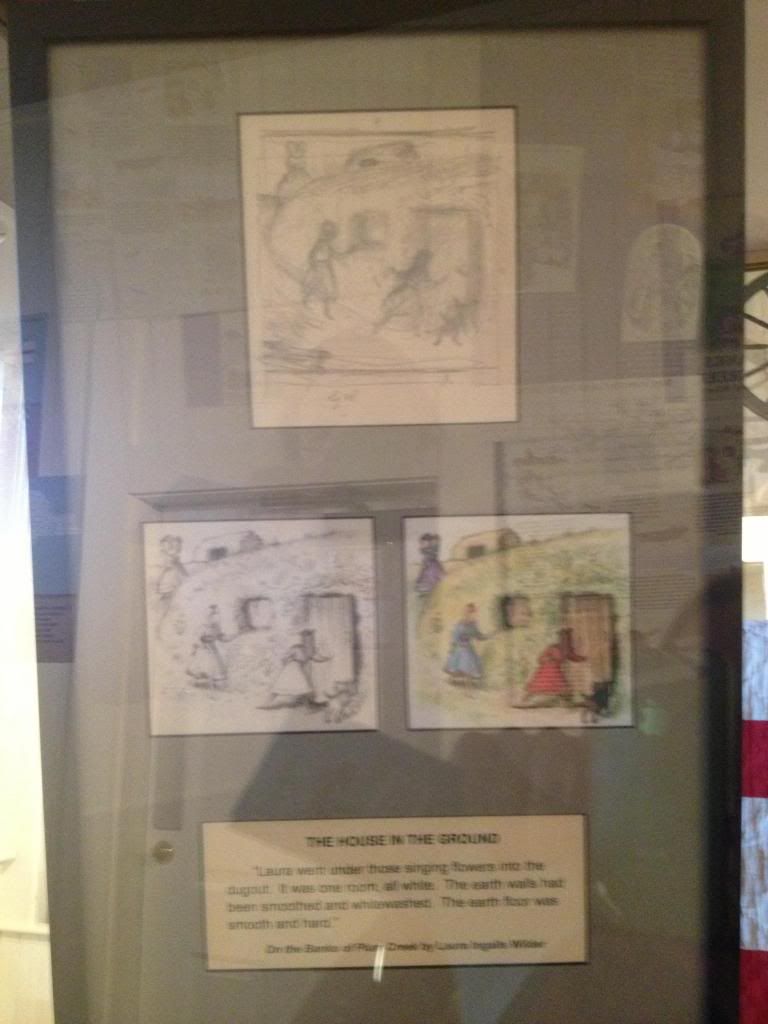
From there, we moved into the second room of the depot, which was dedicated to the Little House TV show and memorabilia. I was never that into the show as a kid, so I gave that room a pass and headed onward. The path led us back outside and to a chapel that was constructed by a high school shop class in 1983, according to the museum pamphlet. It’s not an exact replica of what a chapel from Laura’s time would’ve looked like, but it contains some items from local churches.

As we continued on the path, we took in the beauty of the prairie plantings. Less than .1% of the natural prairie that covered the plains during Laura Ingalls Wilder’s time remains today, which is really pretty depressing. Since the prairie itself is such an integral part of Wilder’s stories, this portion of the museum grounds was planted with native prairie grasses and flowers in 1999. It really was gorgeous, and helped you get a sense of what her world must have been like.
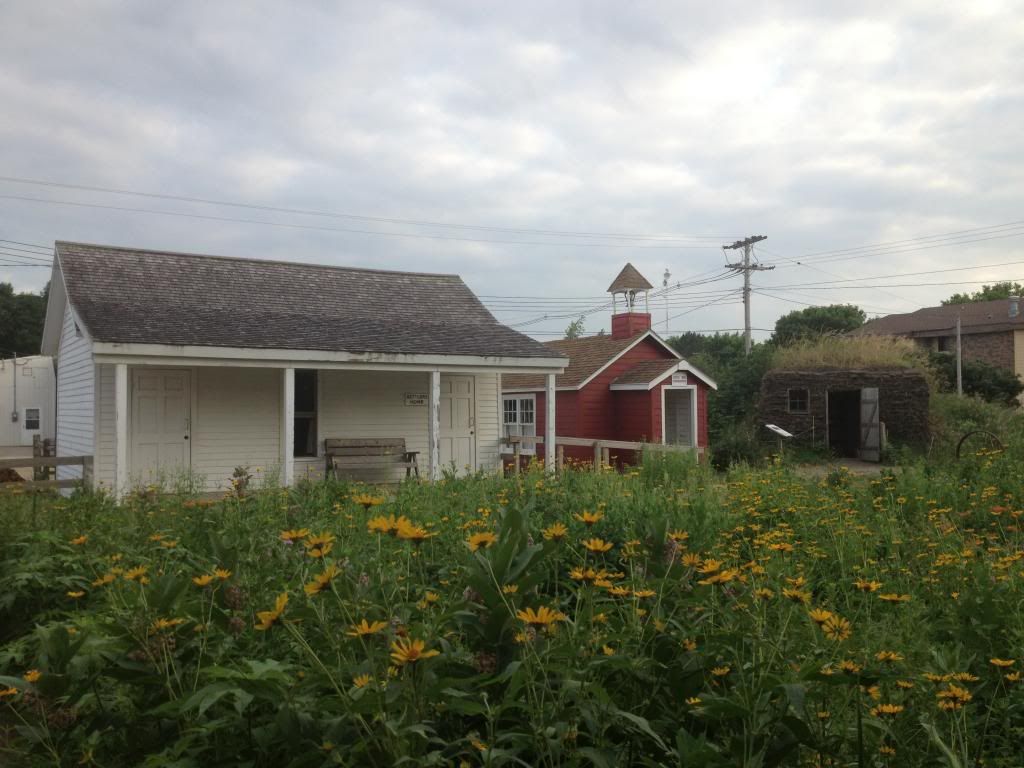
The next building was called “Grandma’s House,” and has no connection to Wilder whatsoever. But, it was built in 1890 and has been furnished in styles from 1890-1920, and included other exhibits inside. I avoided the room full of dolls (too creepy for me), but the “A Plum Creek Experience” hands-on room was a lot of fun. I love museums that encourage you to touch and interact with the exhibits! I especially liked the display of letters Wilder had written to readers, and my cousin enjoyed the taxidermied buffalo.



Leaving Grandma’s House, we went back outside and past the jail and dugout. The dugout was made to be the same size as the one Wilder describes that her family lived in in On the Banks of Plum Creek, but this recreation is aboveground, whereas Wilder’s was in the bank of a creek. It was so small inside—I can’t imagine living there with your whole family. I guess that’s one reason why they spent a lot of time outside!
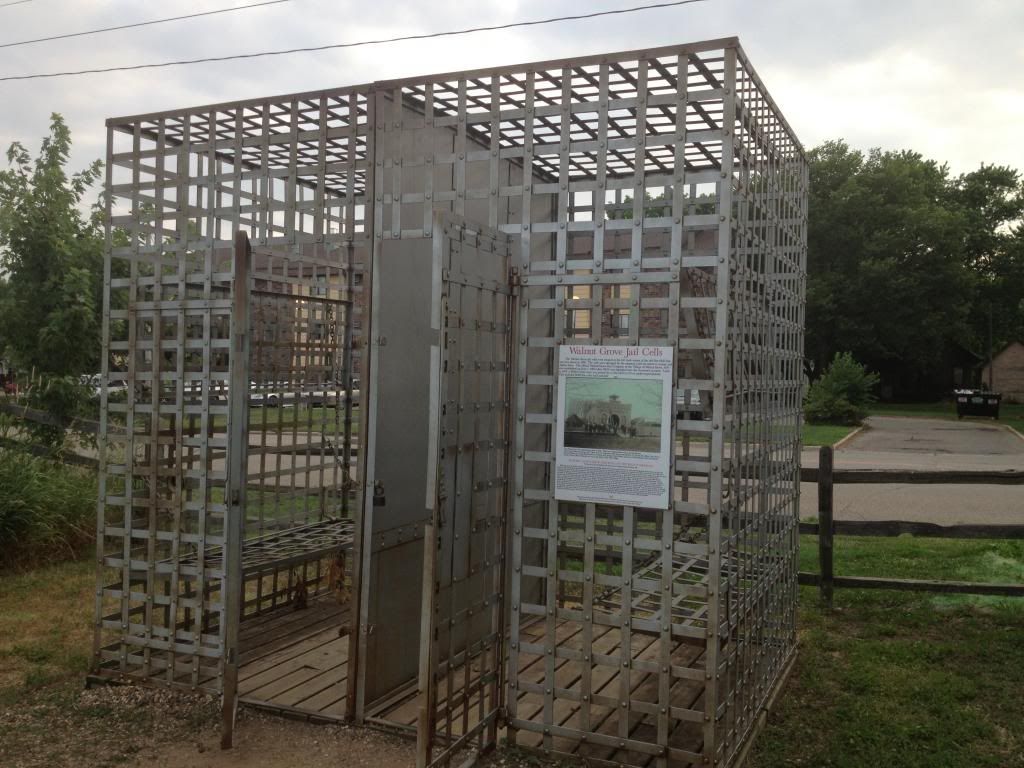
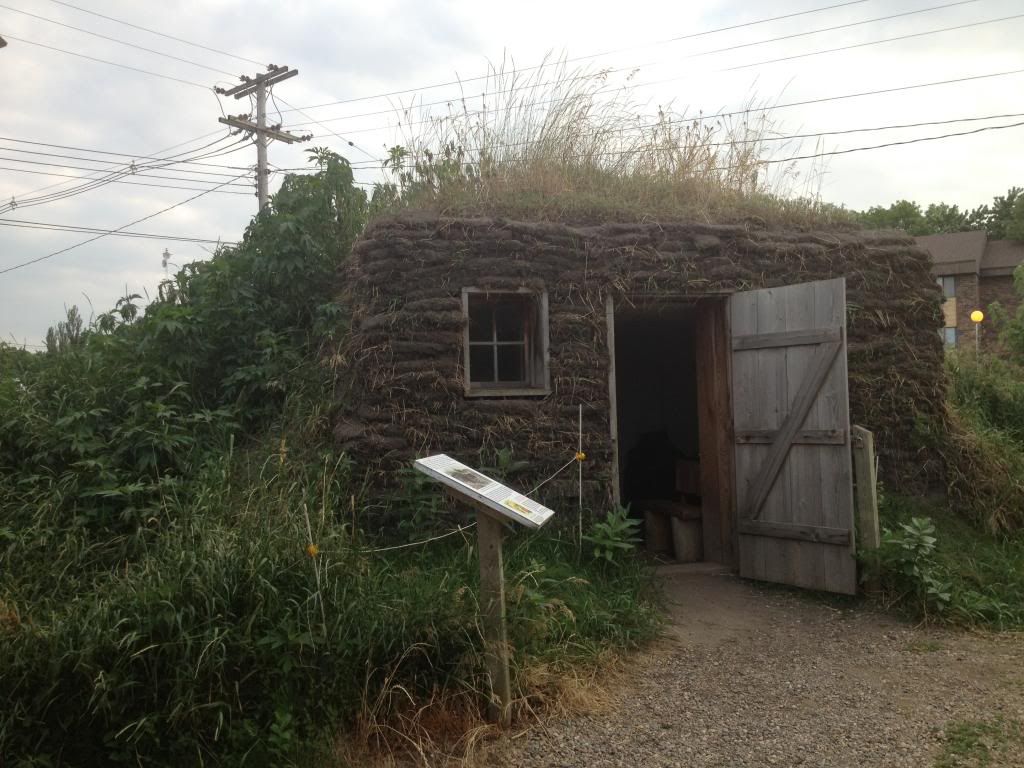
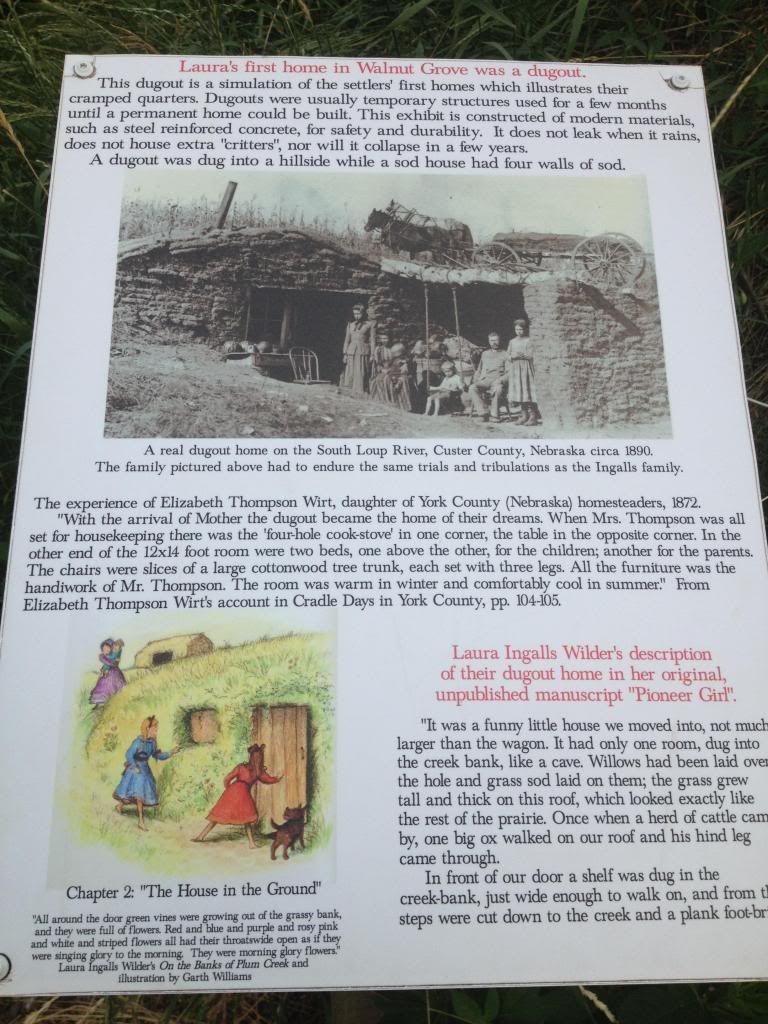
Next up came a schoolhouse, also built by a high school group. It’s not the size of a real prairie schoolhouse, but it is similar and gives a good idea of what a real one was like.
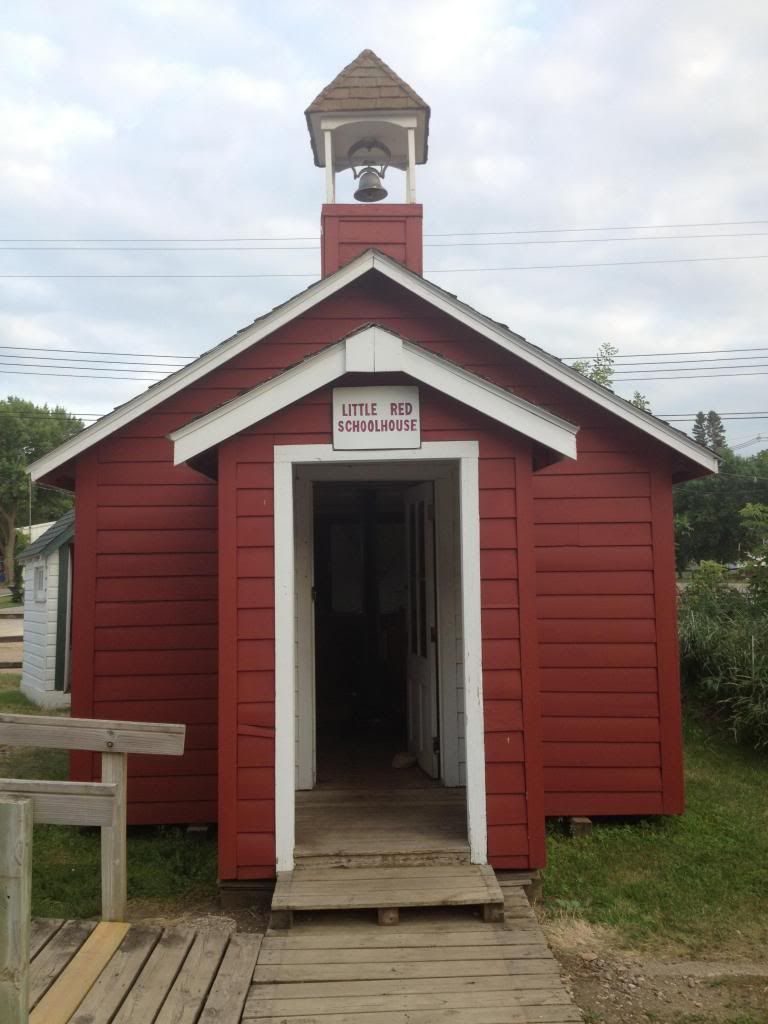

Perusing the brochure shows me there was an outhouse that I apparently completely missed, because I moved right on to the early settler’s home. (You can see what the front of it looks like in the prairie planting picture—it’s the building on the left.) According to the brochure, it was moved to this location from property owned by Eleck Nelson, who was a neighbor of the Ingalls’. It has been furnished to represent what a pioneer home would’ve looked like in the late 1800s, and it smelled deliciously of pine. Here, have a look (unfortunately not scratch-and-sniff):

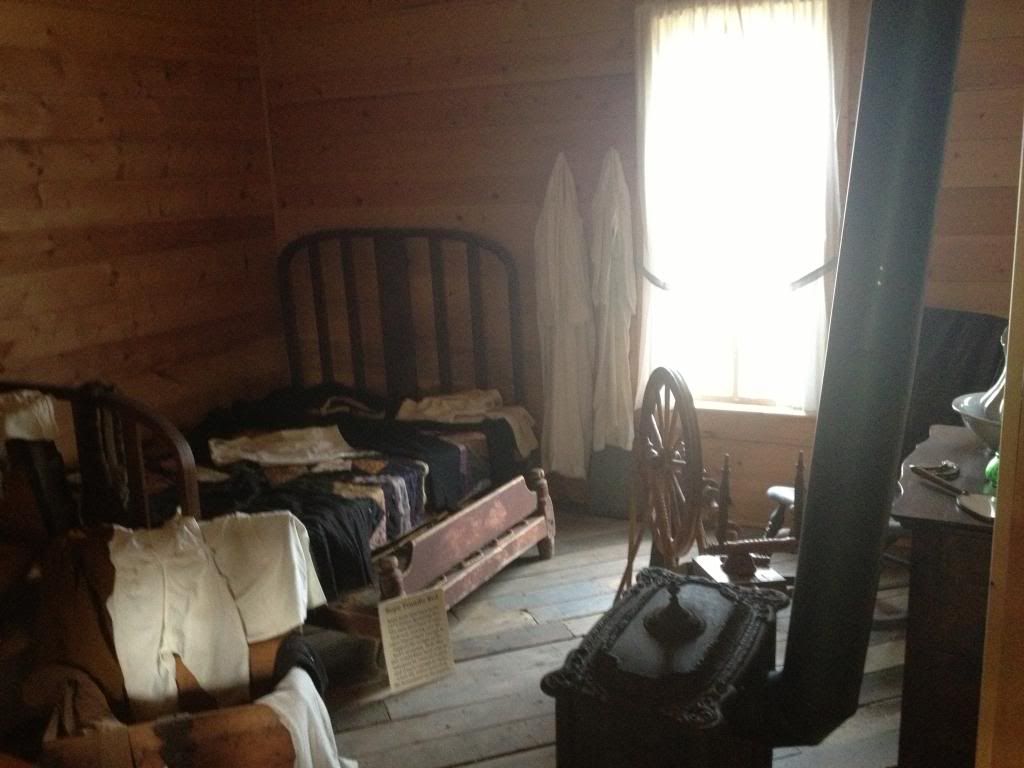
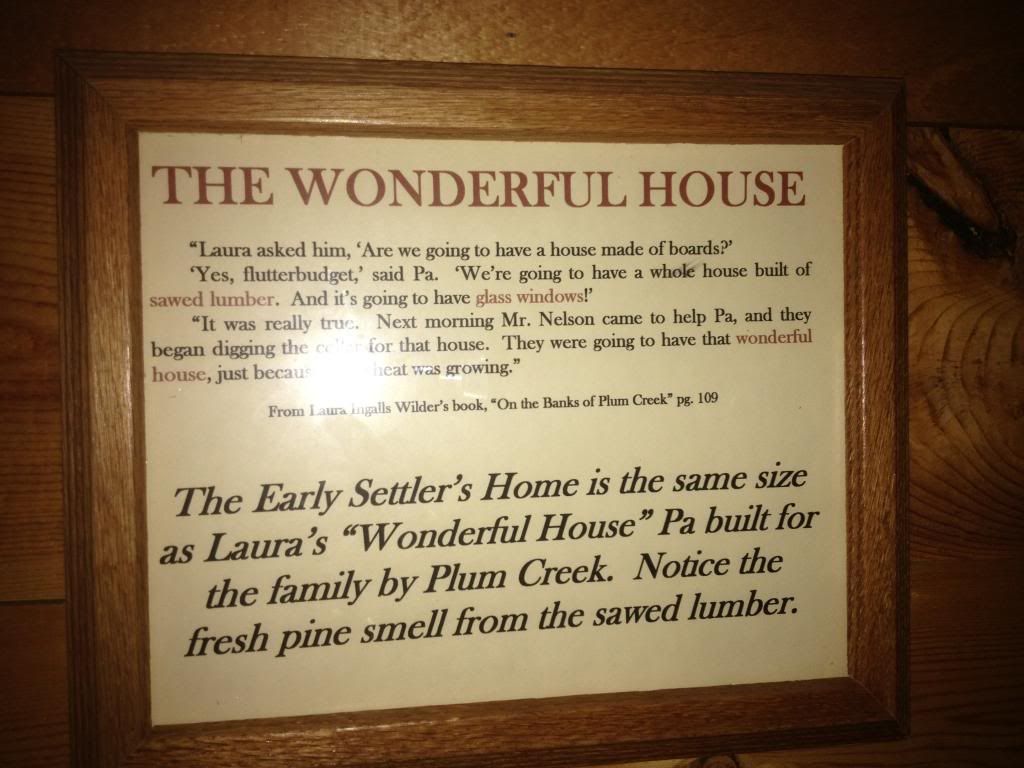
The last museum building was Heritage Lane, which housed all sorts of stuff, from a covered wagon with items settlers of the time might have carried with them, to equipment from the original Walnut Grove Tribune newspaper office. We were really running short on time at this point, so we just had a quick look at the displays.
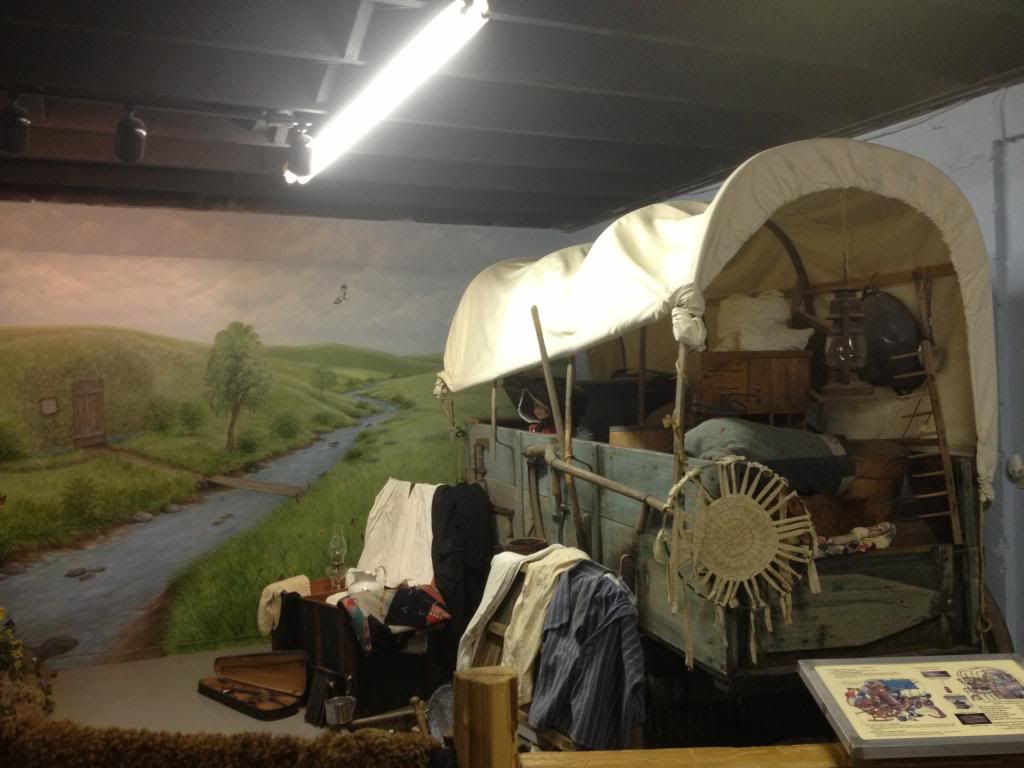
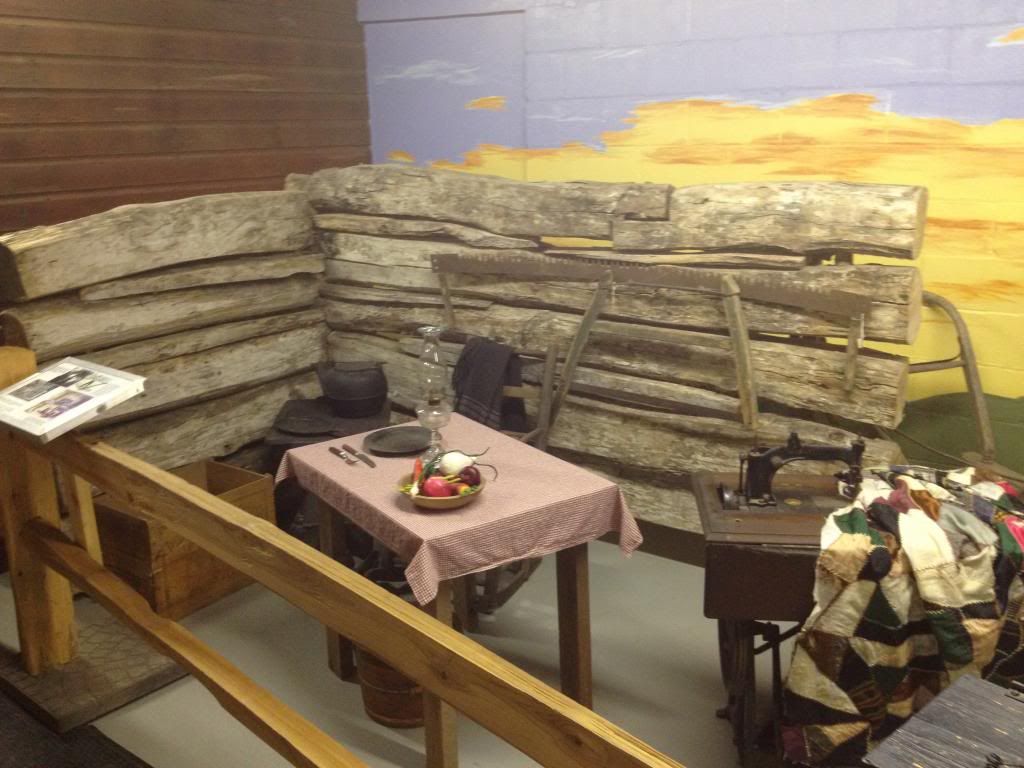
With only 5 minutes left before closing we exited through the gift shop, which was full of all kinds of interesting stuff. There were the usual tsotchkes (mugs, pins, et cetera), but there were also some really unique things—autographed books, pottery, pioneer bonnets, a replica of the engagement ring Almanzo Wilder gave to Laura Ingalls… (If any of these items catch your eye, you can save on a trip to Minnesota and instead check out the museum’s store online.)
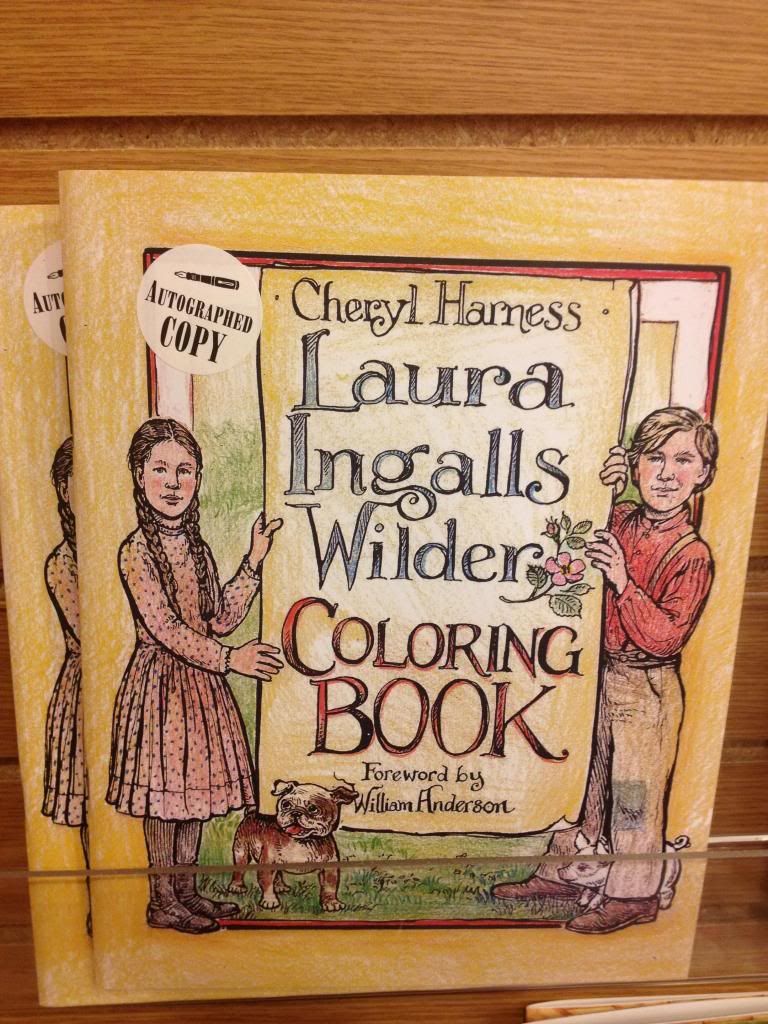
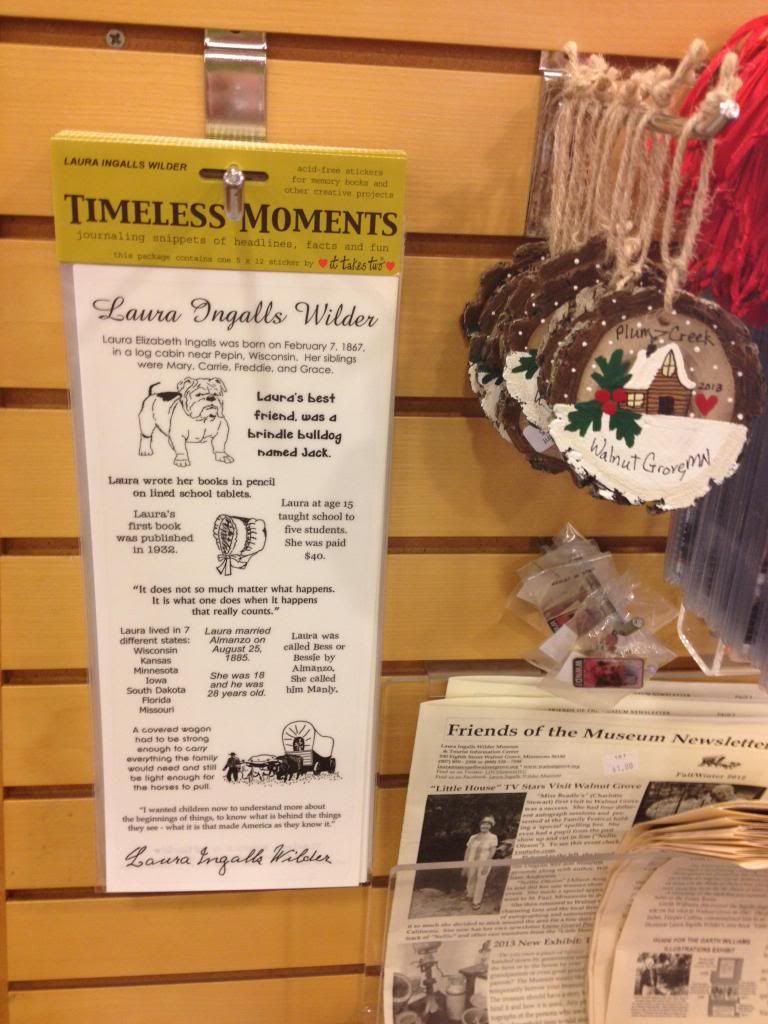
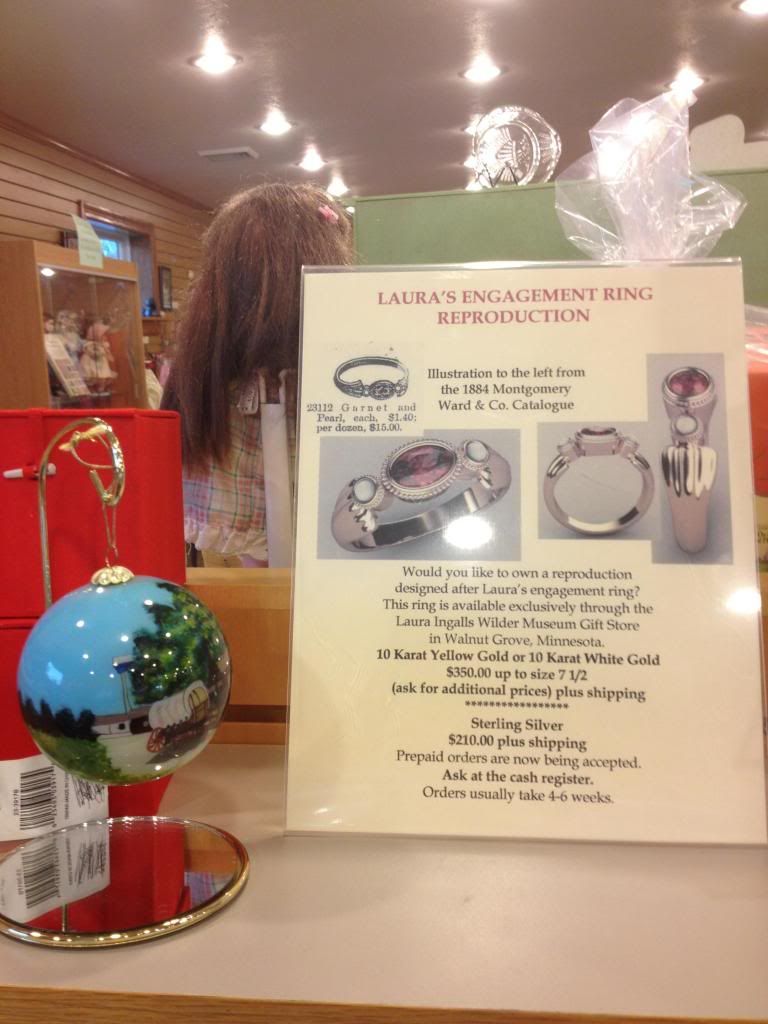
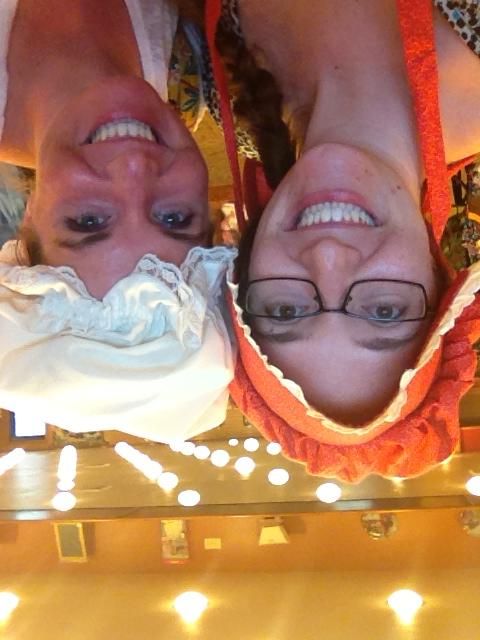
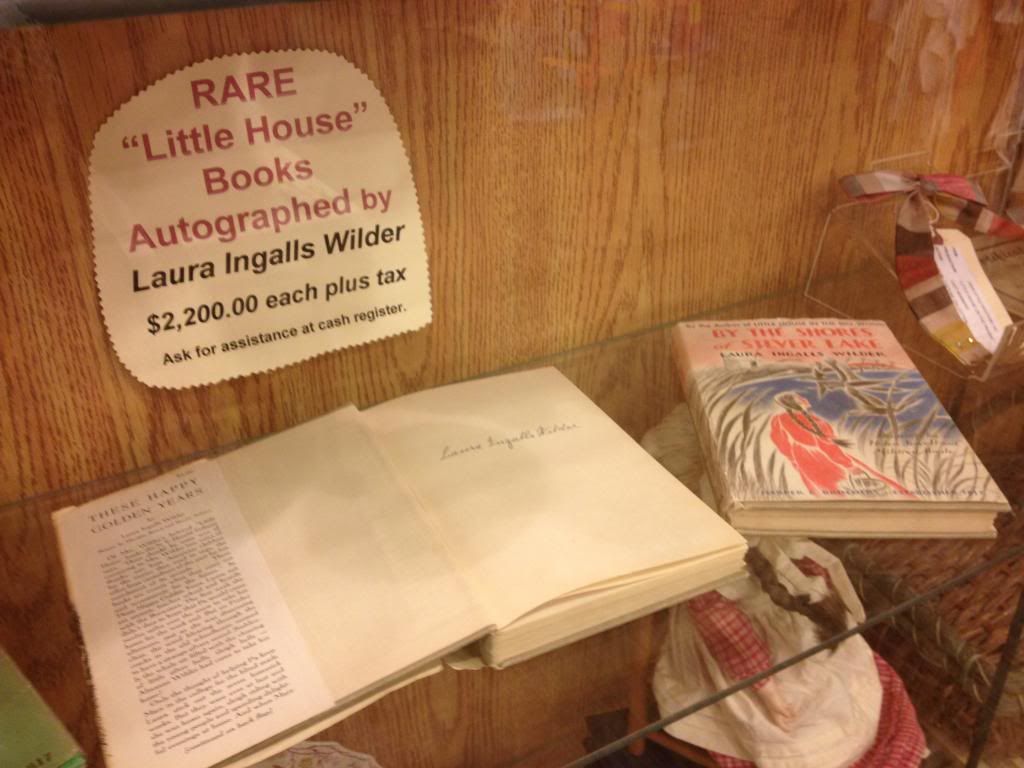
I made my purchase (pictured at the very end of the post), and we headed outside to take some silly photos before getting in the car and driving the short distance to the site of Wilder Pageant.
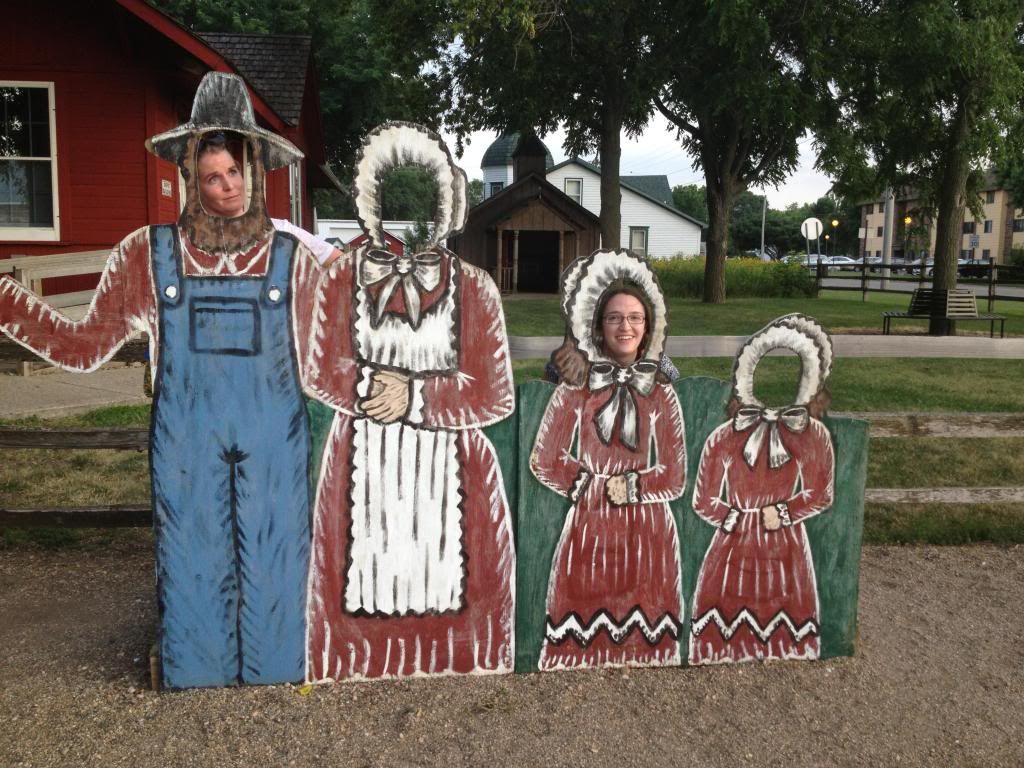
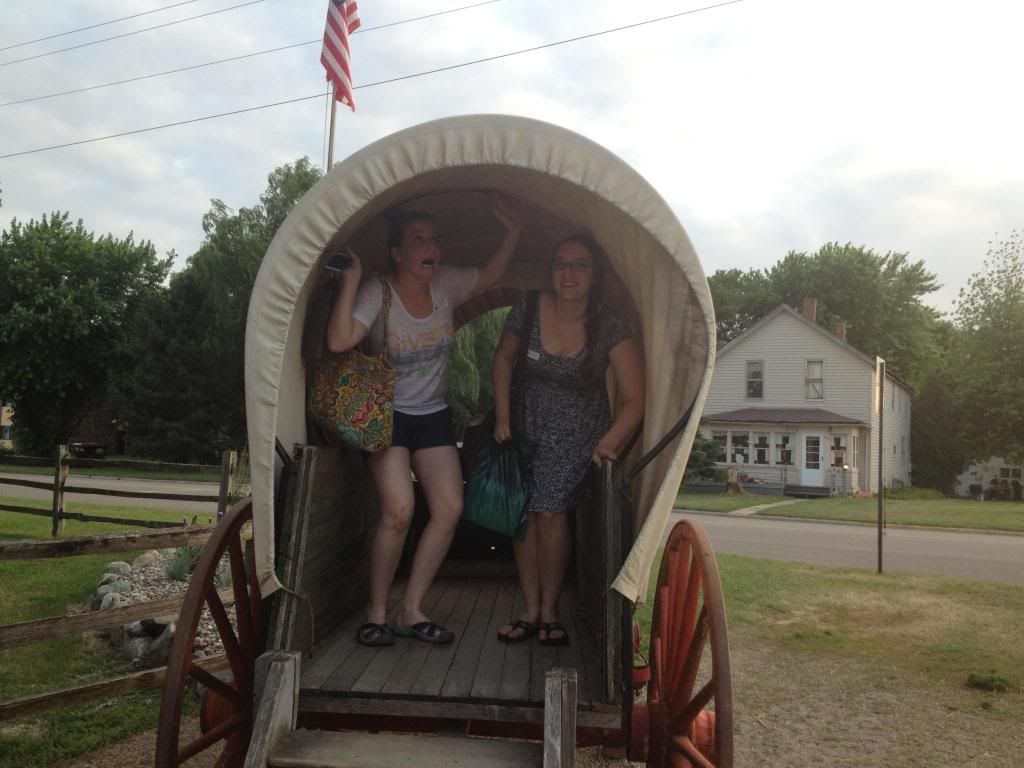
The Wilder Pageant (currently in its 36th year) takes place quite literally on the banks of Plum Creek every summer, and is described as “an outdoor drama based on the life of Laura Ingalls Wilder in Walnut Grove.” We couldn’t find all the info we needed on the website and the ticket office number wasn’t picking up when we called, but luckily the staff at the museum were able to answer our questions. As we saw online, there are 2 types of tickets—reserved admission will get you a seat in chairs right in front of the stage for $14, and general admission will get you a seat on the grassy hillside for $12 (BYOchairs or blankets). As we did not see online, you are able to purchase your tickets right at the box office onsite where the show is performed. Also, it’s good to know that they accept credit cards there. We opted for general admission.
The show didn’t start until 9 p.m., and it was 2 hours long with an intermission in the middle. Much longer than I expected, and since we’d driven an hour to get there we didn’t get home until after midnight! Since Minnesota in summer is pretty much the land of the midnight sun, it was still light out when the show started, and gradually faded into night, which the show used to good effect. I assume the actors and actresses are all local residents—they probably won’t be winning any Tony awards anytime soon (and I don’t mean that in a not nice way!), but it was a fun way to spend the evening and it was cool to see how the local community is so involved in preserving the Laura Ingalls Wilder legacy. It must be fun for the local kids to see who gets to play what characters each year. There was a covered wagon pulled by horses (seen lurking in the parking area at the beginning of this post), a baby cow that didn’t want to cooperate, and FIRE! There was good sound engineering, special effects, massive set changes…very cool. It was so beautiful and calm and still sitting on the hillside that night that it was easy to imagine what summer nights were like on the prairie for pioneers like the Ingalls family. The list of scenes will give you an idea of what was covered in the play:
- Act One Scene 1: Arrival in Walnut Grove
- Act One Scene 2: New Neighbors
- Act One Scene 3: Kennedy House
- Act One Scene 4: Building the Church
- Act One Scene 5: Schoolyard
- Act One Scene 6: Oleson's Store
- Act One Scene 7: Grasshoppers
- Act One Scene 8: Christmas
- Intermission
- Act Two Scene 1: Laura's Party on Plum Creek
- Act Two Scene 2: Prairie Fire
- Act Two Scene 3: Town Council
- Act Two Scene 4: Prep for Social
- Act Two Scene 5: Church Social
- Act Two Scene 6: Mary's Blindness
- Act Two Scene 7: Decision/Epilogue
I didn’t take many photos during the show because some helpful children behind us were accusing us of the forbidden recording of video, but here are two to give you an idea of what the stage was like:
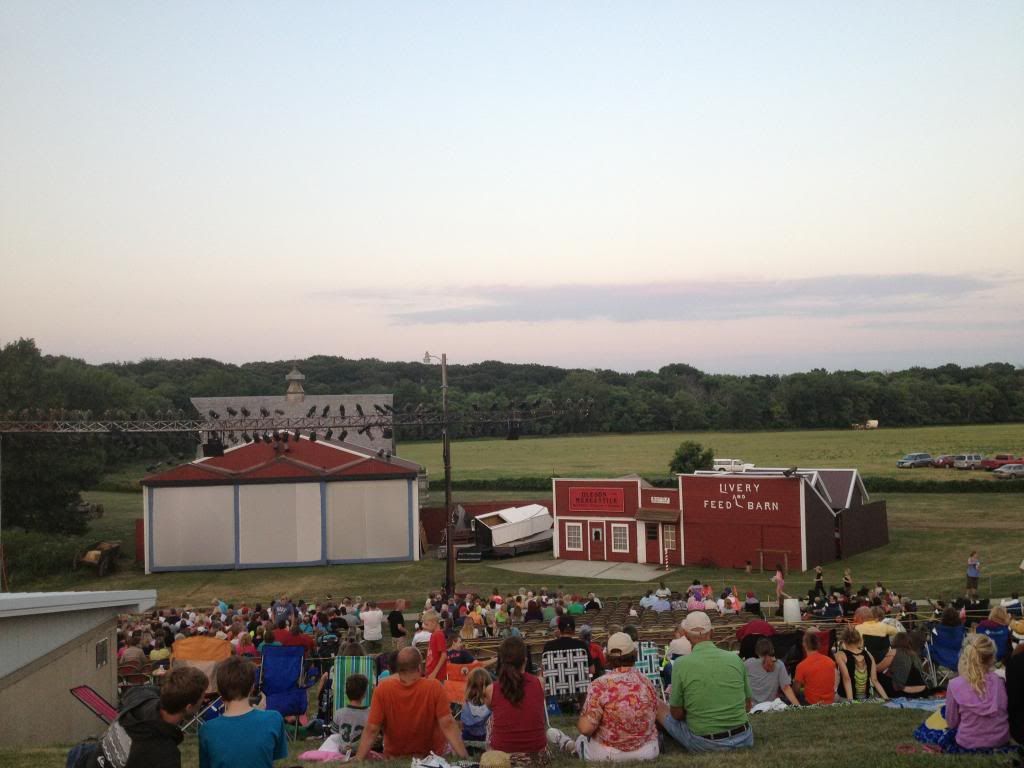
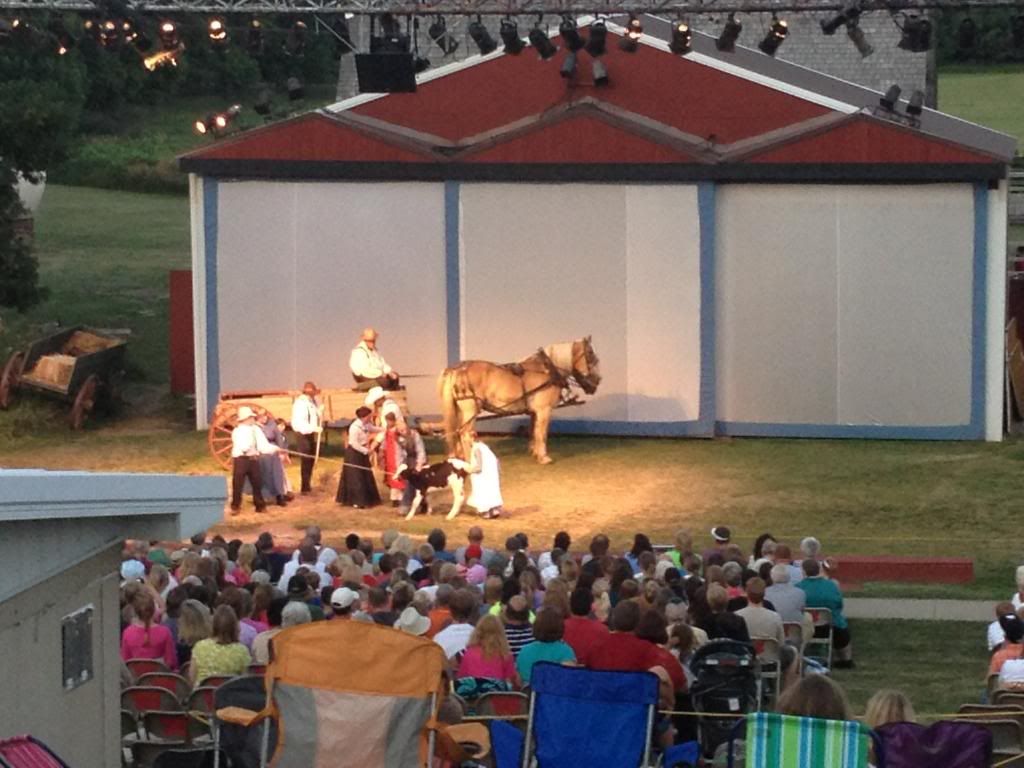
Apparently there are other Laura Ingalls Wilder-related things to see and do in Walnut Grove, such as visit the actual site of her family’s dugout house, see the church that still uses the bell her father helped pay for, and visit the remnants of a tall grass prairie, among other things. You could easily make a day or two visiting the local attractions and historic sites. Next time I visit, I’ll have more things to check out! All in all, it was a fun experience that I would recommend to any Little House or pioneer fans. Now I want to visit all the Laura Ingalls Wilder houses and sites!
The Laura Ingalls Wilder Museum and Gift Store are open in July seven days a week from 10 a.m. to 6 p.m., with hours extended to 8 p.m. on the days of Wilder Pageant performances. Museum admission is $6 for ages 13 and over, $3 for ages 6-12, and free for children 5 and under. For more information about the museum, pageant, and other area activities (including museum/gift shop hours during other times of the year), visit www.walnutgrove.org.
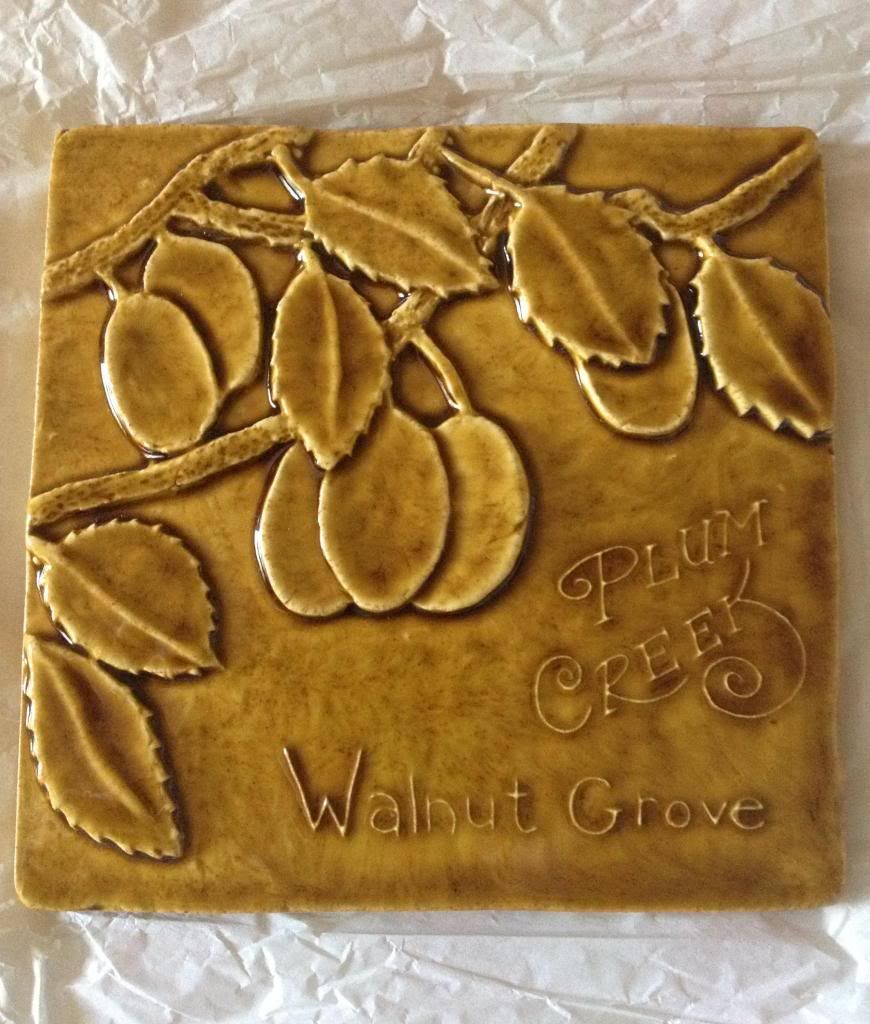
My souvenir from Walnut Grove!
Have you ever made a literary pilgrimage? What book-related spots have you got a hankering to visit?







7 comments:
Amazing post, Alyssa! I LOVE your pictures, and think the trip sounded like a lot of fun. I'm jealous!
As for my literary pilgrimage wish list...
Oxford
Ithaca
Prince Edward Island
How exciting! Looks like a museum I'd love to visit. I too have a bit of love for pioneers (Oregon Trail was the only computer game I couldn't leave behind)! I also went on a 3-day pioneer trek back when I still went to church. We all wore our homemade pioneer clothes and pulled our own covered wagons with all of our stuff. For something like 8+ hours the first day with no food until we stopped. :D It was actually a lot of fun.
As for book-related spots I'd like to visit- the Ozarks. "Where the Red Fern Grows" and "Summer of the Monkeys" were two that I've read countless times since childhood. :)
Nice! Love the links. For one horrible second I thought you meant Ithaca, NY and couldn't figure out why... XD I also recently discovered there is an island south of South Africa called Prince Edward Island. How different do you think Anne of Green Gables would be if she came from there?
Hah, that's amazing! Where did you guys do this pioneer trek? Out in the desert? Sounds like something I would have loved as a kid. I think I still have the VHS about the Oregon Trail that came with my copy of the game. I remember reading Where the Red Fern Grows in class in 5th grade (sad, but good!), but I've never read Summer of the Monkeys! I'll have to look that one up.
As you know, all thanks to John, I enjoy Little House on the Prairie! The books and the show. These pictures make me want to go there next time I am in Minnesota, despite the fact that it is mostly likely not even remotely close to where my father's cabin is in Garrison, MN. But, still I will make him take me there...or something.
Google Maps says...4 hours. So yes, it would be a bit of a drive. XD But you could make a weekend of it! There was lots of cool stuff to see and do around there. And you can visit New Ulm! :D
Hahaha it is also probably a drive from where my dad is currently living in Stanley, North Dakota.
Post a Comment